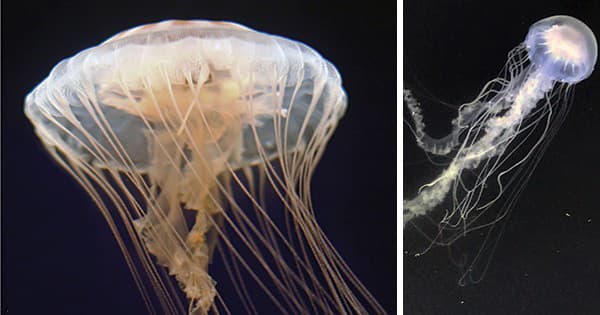
This everyday jellyfish is actually two separate species
The sea nettle jellyfish is common along the East Coast of the United States and can sometimes be a nuisance to swimmers during jellyfish blooms. But new research has discovered that this average jellyfish is actually two different species.
It was assumed that sea nettle jellyfish, found in areas like Chesapeake Bay and Rehoboth Bay, were the same as ocean-based nettle jellyfish. But as it turns out, the “bay nettle” is its own unique species.
The discovery was made by Patrick Gaffney, a professor at the University of Delaware and Keith Bayha, a research associate with the Smithsonian’s National Museum of Natural History, using DNA sequencing.
“Before DNA came along, people in museums looked at organisms and counted spines and bristles, measured things, and sorted organisms by their physical characteristics in order to identify species,” Gaffney said. “In the case of this jellyfish, which has been commonly known for centuries, Keith found through DNA sequencing that there were actually two groups.”
The researchers performed genetic testing on samples of sea nettle jellyfish and found that there were differences between the jellyfish from bayside areas and those that were ocean-based.
The DNA samples were also compared to physical measurements of the jellyfish.
The ocean-based sea nettle jellyfish are larger, have more tentacles, and a larger bell (the appropriately-named top part of the jellyfish) compared the bayside nettle jellyfish.
It was Bayha that confirmed the findings, and thus, the sea nettle jellyfish was officially named as two different species, the “bay nettle” and the “sea nettle.”
“When you go back and pay close attention, you start counting the number of stinging cells and types, you see discrete differences that correspond to the DNA,” said Gaffney. “In many cases, when we plotted the data, the graphs looked entirely different with no overlap, reaffirming that it was two species.”
The researchers note that jellyfish are not commonly studied, and so species differences can often go undetected. This discovery is just one example of a species that was long overlooked because researchers didn’t investigate beyond physical attributes.
—
By Kay Vandette, Earth.com Staff Writer
Image Credit: Shannon Howard, South Carolina Aquarium; Keith Bayha












